News
Sheepherder’s Monuments, a Reminder of Wyoming’s Woolly Past
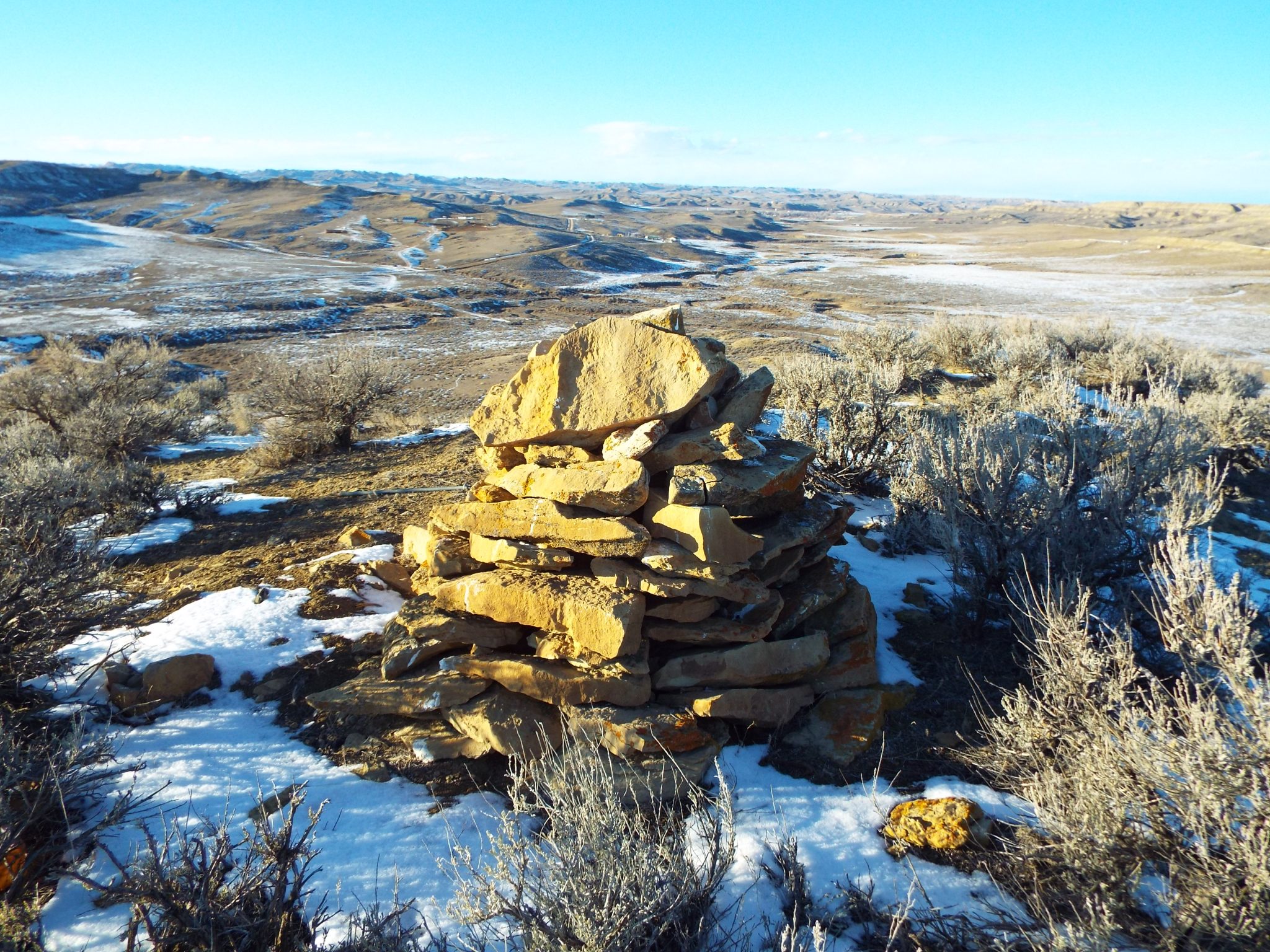
A Sheepherder’s Monument
On some high hills throughout the West, there are piles of rocks stacked up. There were some on the Big Horn Mountains, but many have succumbed to time and curiosity seekers carrying off bits and pieces through the years.
What are they and why are they there? These are sheepherder’s monuments. Mute reminders of Wyoming woolly and sometimes violent past, when sheepmen came into Wyoming with large herds of sheep and took over pastures that cattlemen felt should belong to their cattle.
Unlike cattle, sheep are susceptible to many predators on the open range, they are smaller, dumber, and are very herd-bound. Cattle are larger, and an angry mother cow, especially if she has horns, is very able to protect her calf from many predators.
Sheep, not so much. Wolves, coyotes, bears and mountain lions all preyed on the small lambs and even the adult sheep. Due to the predators, sheep could not be just turned out on the open range and left to graze, they had to be accompanied by herders.
Sheepherders lived with their bands of sheep, accompanied by a sheepdog or two, a saddle horse, and living in a tent or a sheep wagon.
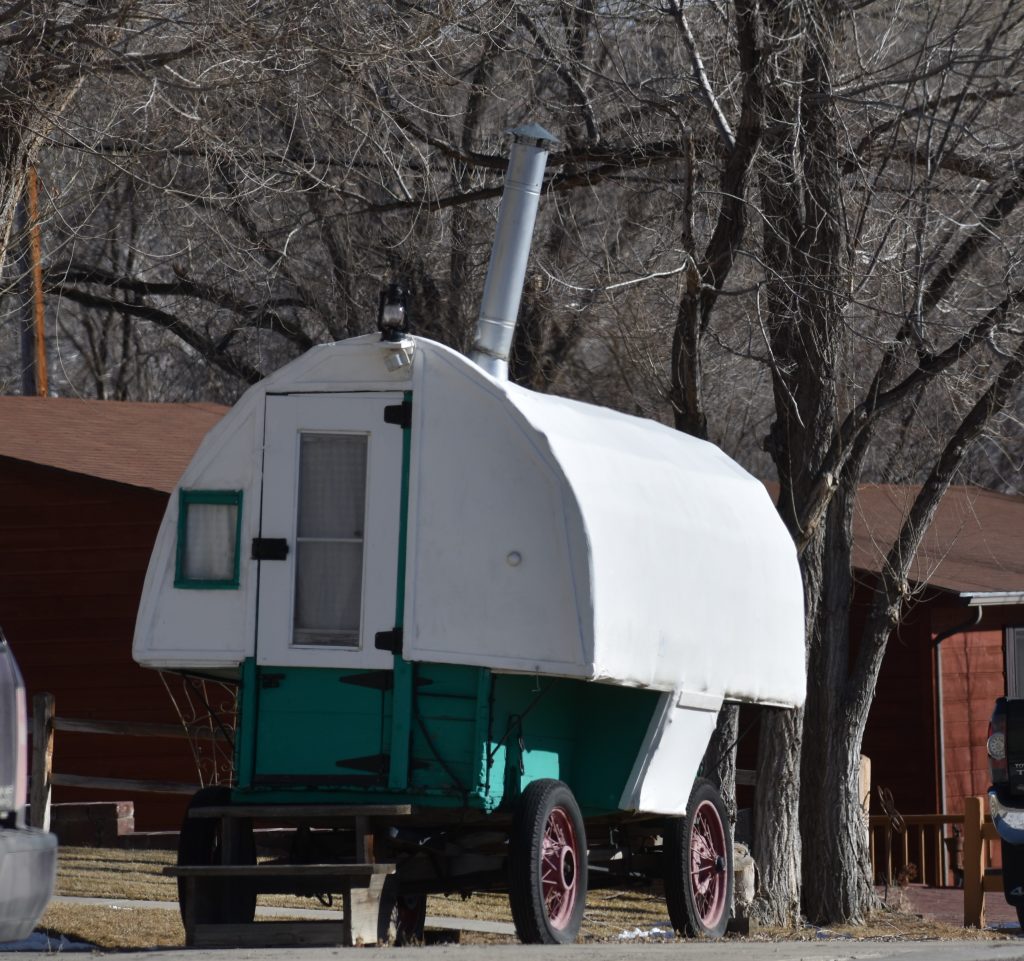
The sheep wagon was the first camper trailer. Very small, but it had a bed, a table, a sink and a stove. At first these were drawn by horses, later they were fitted with rubber tires and could be pulled behind a pickup. The herder might live in one of these sheep wagons all summer while moving the sheep from grassland to grassland. A camp tender would ride out occasionally to bring supplies, news, and help move the wagon and sheep to a new range.
These monuments were built by bored sheepherders, giving them something to do while watching the sheep and keeping an eye out for predators.
Bob Moore, whose family raised sheep for years near Arvada, had this to say about the monuments. “We used to have a few on our ranch. They did have a purpose. The herder would pile up the rocks about man-high. At night he would put a lighted lantern on the top of the rock pile, and then he would bed down the sheep between the rock pile and his tepee.” Before sheep wagons, the herders slept in a tent, and by bedding the sheep down between himself and the monument, the coyotes and other predators would think there was another man with the sheep.
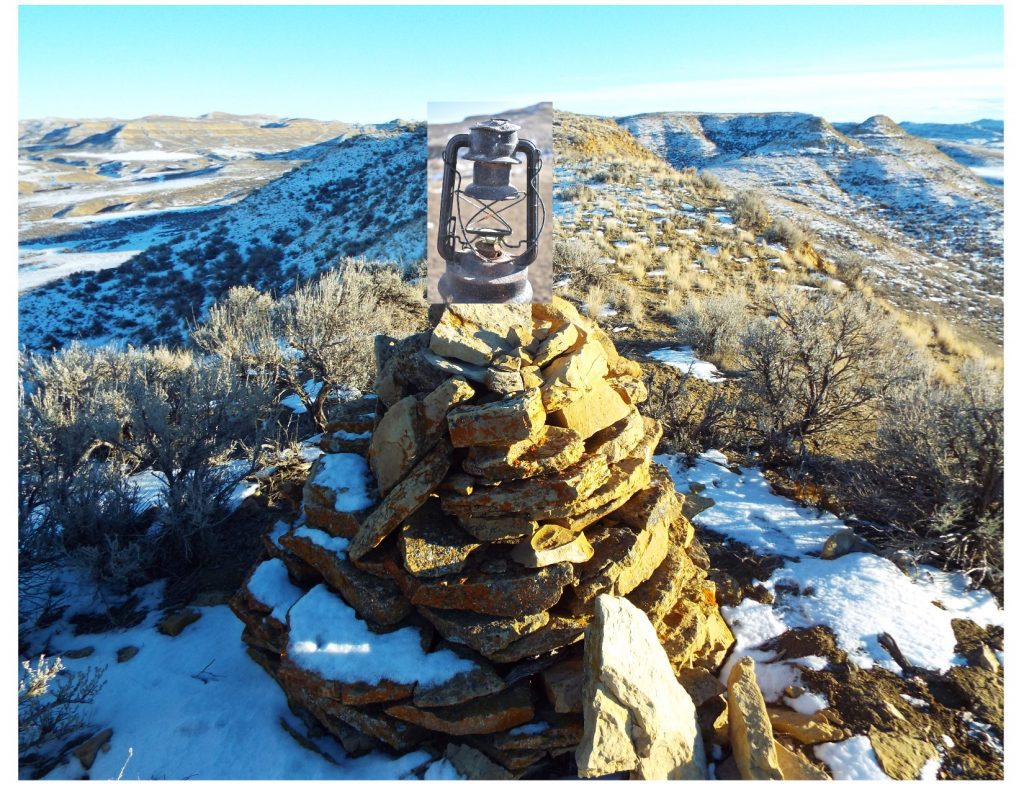
The late Wallace Vannoy, Clearmont, who had a sheepherders monument on the hill above his house, said a herder once told him that the rock piles were built to mark good grazing lands, where the herder could sit on the high hill and see a lot of the country below where the sheep were grazing. Other herders trailing herds through could see the monument and know there was water and graze there.
Sheep are a part of Wyoming’s history as much as cattle are. During the early 1870s, one of the first ranchers to bring sheep into Wyoming was Francis E. Warren of Cheyenne. Warren was a storekeeper, rancher, territorial governor, and served as a U.S. senator for nearly 40 years. He said he owed much of his wealth to his sheep. One U.S. senator called Warren the greatest shepherd since Abraham.
He wasn’t the last rancher to see the double-bounty from sheep, not only meat, but also wool. Sheep ranchers began to compete with the cattle barons for their share of the open range. The cattle raisers were not happy with the invasion.
In a Sheridan Post article in December of 1897, this article appeared, and although it happened in Colorado, this sediment among the cattle men was common throughout the west at that time, and even into the 20th century.
Sheridan Post – Routt County Cattleman Will Resist the Invasion by Edward’s Herds. A meeting has been called at Craig, Colorado, on Dec 18, to consider the presence of sheepmen in Routt County, (Colo). Edwards has boldly returned to Colorado with several thousand head of sheep and at present keeps them close to the Wyoming line. The cattlemen of this and neighboring counties will be asked to unite forces and decide on the mode of action in the present situation……All they ask is that sheep be kept off the range in this part of the state.
A visit to the Four Mile Country will convince anyone how utterly impossible it for cattle and sheep to occupy the same range. Sheep have been run on that range for several years and there is not a spear of vegetation except the despised sagebrush.
Should the cattlemen allow Edwards and other sheepmen the privilege of running sheep in this country it is believed it would be only a short time until all vegetation would be gone.— Craig, Colo. Paper.
Sometimes the tensions escalated into violence, like the infamous Spring Creek Raid near Tensleep on April 2, 1909, when seven cowmen attacked a sheep camp. The raiders killed three men, and kidnapped two others. They killed the sheep dogs and dozens of sheep.
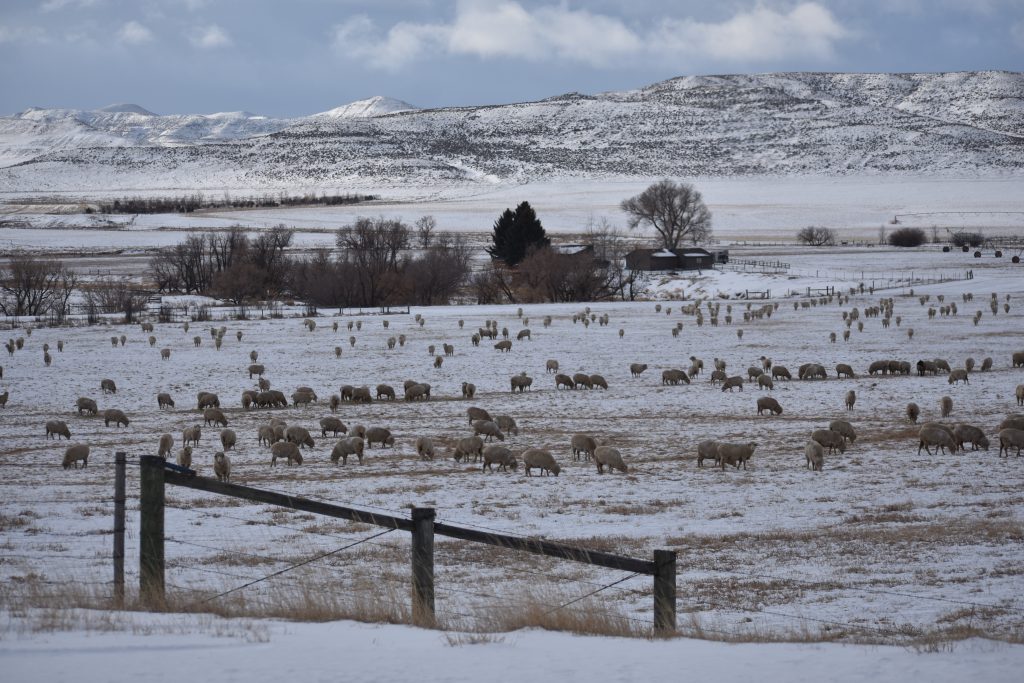
Although no humans were killed, there was a similar raid near Arvada, as this article from the Sheridan Post on March 1, 1907 reports.
Sheep Killed By Masked Men: Singletrees, Neck YokesAnd Guns Used As Weapons:Last Sunday, Sheriff O.P. Benefiel received a telegram James A. Waisner at Arvada. on Powder Rlver, fifty miles southeast of Sheridan. Waisner stated that he was in trouble with his sheep on the range and that probably a band of sheep had been killed and asking for immediate assistance in investigating the matter and bringing the offenders to justice if such was the case. Mr Benefiel took the first train to Arvada and upon his arrival learned that a herder named John Hinshaw, in charge of a band of Waisner’s sheep ranging on the middle fork of Wild Horse Creek, at least 12 miles into Crook County, (Note: Campbell County wasn’t formed until 1911) had been approached by three masked men who held him up, tied his hands behind him, put him on a horse and took him into camp where they tied him to a wagon wheel. The men departed in the direction in which they had left the sheep. After absence of several hours they returned, set him at liberty, turned him facing toward Arvada and told him to travel fast….in Arvada, he summoned the sheriff. On the following morning Mr Benefiel, accompanied Waisner and Hinshaw to the scene of the trouble and there found that the camp wagon had been burned and the supplies destroyed. Further investigation… reveled the fact that about two hundred head of sheep had been cut out and driven into a washout, where they were killed with singletrees and neck yokes taken from the camp wagon. There was nobody to be found in the vicinity, but an examination of the ground showed that there must have been ten or twelve men engaged in the work. It is reported that at some time in the recent past another band of Waisner’s sheep had been forcibly removed from a certain range where they were not wanted and a warning had been given to keep away.
To help cut down on the tensions between the two factions, deadlines were established, sheep on one side, the open range for cattle on the other.
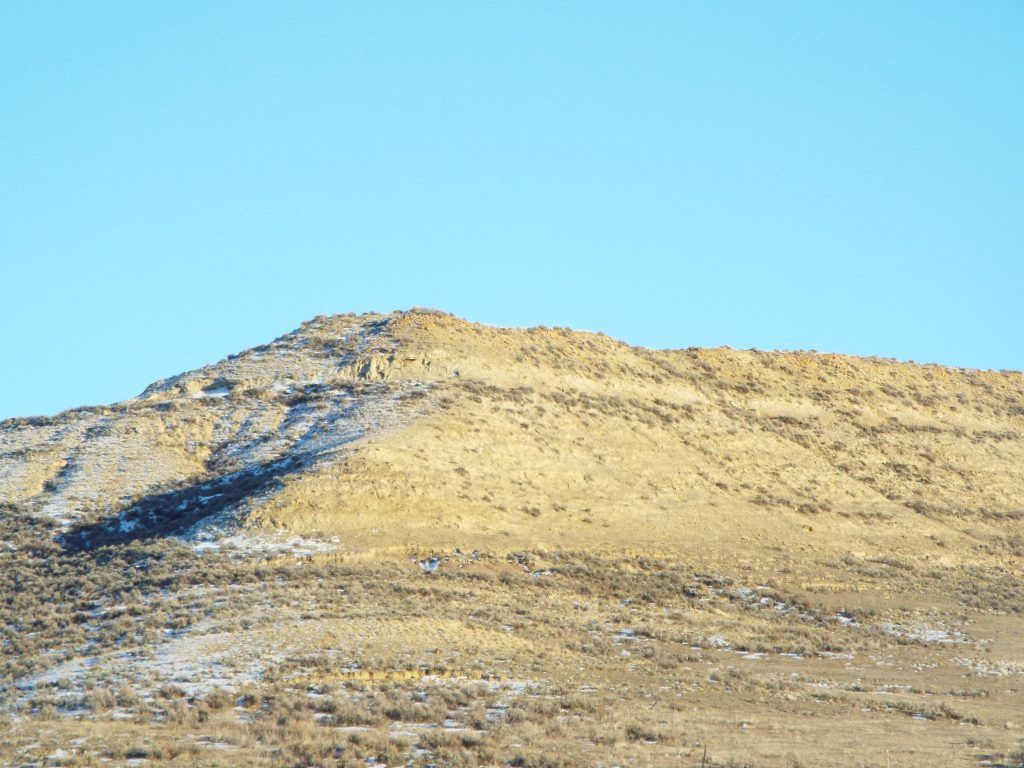
The Wyoming Industrial Journal, in Cheyenne in June of 1901 had this report, The cattlemen and ranchmen north of the south forks of the Shoshone- River held a meeting last week at Marquette and formed the Ranchmen’s and Stockmen’s Protective Association. The matter of division of the range was discussed and it was the unanimous opinion that dead-line should be established around certain range, and that sheepmen be given notice that flocks will not be permitted to graze thereon…… This applies, of course, to the nomadic flocks, or those that are driven from one place to another, the home ranch of the owner usually being large covered wagon.
One of these deadlines established in the Arvada area, possibly as a response to the 1907 attack on Waisner’s sheep. In the book, Past Present and Posterity, copyright 1990, an article by Patrick Walsh talks about this deadline. The article said that there was a joint meeting of the cattlemen and the sheepmen in Buffalo on Feb. 1, 1908, and the deadline was established. It ran from the head of Fortification Creek, to a point, “north of the burning coal bank,” west to Healy spring, crossing the Powder river, turning north and crossing Crazy Woman Creek, around Arvada, and along Wild Horse Creek and back to the starting point on Fortifcation Creek. The sheepmen agreed to keep their sheep inside the deadline.
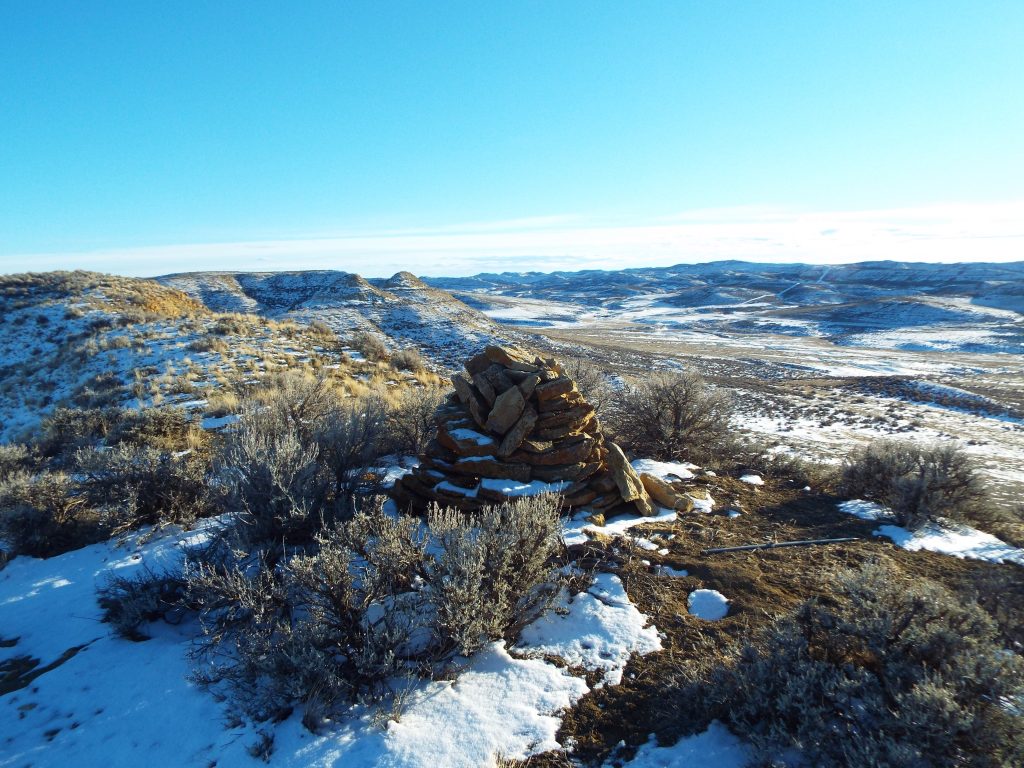
Today, many cattlemen have seen the advantage to running sheep along with the cattle. One rancher after he invested in sheep, pointed to a new pickup and said that the money from the sheep bought that pickup.
So if you see a sheepherders monument today, remember the lonely days that the sheepherder spent on the range, watching his flocks and protecting them from whatever predators might do them harm. And a reminder that at one time the sheep were not welcome on Wyoming’s open range.


Ira roadifer
January 30, 2022 at 9:19 pm
Enjoy reading your story on sleep herders monuments. We have one on Black a stump Draw. We can see from our living room window.i
Braddon Van Slyke
February 1, 2022 at 2:45 pm
A very interesting and enjoyable article – thank you!
Bill Gorman
February 3, 2022 at 11:37 pm
A friend sent me pictures of a couple of them SW of Laramie Peak in Albany County. They are called “Stone Johnnies”,and are 6 to 7 feet tall.
Thomas Bills
February 6, 2022 at 6:56 pm
Very interesting story.
Good timing too! I read this story Friday and coincidentally I came across two sheepherder monuments today east of Buffalo.